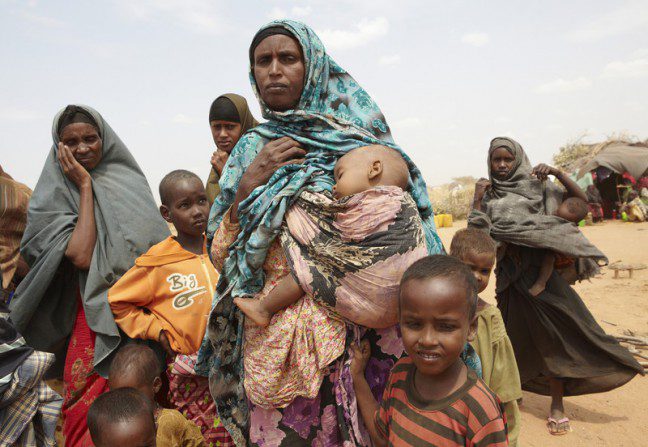Famine. Africa. Two words that take me back to images of starving children in Ethiopia on the TV. I understood that there was a drought and that Bob Geldof held a fundraising concert to save the ‘poor starving people’. I thought that we in the west were saving the day. Not once did it occur to me that we in the west may have contributed to the problem in the first place. I thought the only cause of famine was drought… it seems I was wrong.
Nearly 30 years on from the famine in Ethiopia, people in the Horn of Africa are experiencing a similar situation. I wonder, what are our students thinking when they think of the famine in Africa? Do they at all? What are their attitudes toward it? What do they know about the causes and the solutions? I wonder.
Below are classroom resources and articles to stir up conversation and to help understand the causes and solutions.
Websites, articles and activities
“Feeding minds, fighting hunger” – A great website despite a few small navigational oddities, ‘Feeding minds, fighting hunger’ is specifically for teachers and primary – middle secondary students that addresses hunger and malnutrition. You will find practical tools such as the lesson plans, the “Youth Window” which includes stories, links, forums and FAQ’s and my personal favourite, the cartoon book and activity guide “The right to food: a window on the world”.
United Nation’s World Food Programme website – This website has a page dedicated to teachers and students to explore issues of food, food security, hunger and work done in the field.
It includes news, classroom resources, photo slideshows and a comprehensive list of links to further understand food security issues in the world.
GROW – The world produces enough food to feed us all, yet, one in seven people on our planet go to bed hungry each night. So why does hunger exist in a world with enough food for all? GROW is Oxfam’s campaign to help fix the better food system and work towards a just world without hunger. The grassroots stories, simple explanations and an already popular tool for the classroom – the interactive food prices map makes GROW a good place to explore the food crisis in its entirety.
Opinion and news pieces – The Guardian’s blog, Poverty Matters is for those students who are keen to sink their teeth into the complexity of this issue and challenge their thinking as well as a great starting point to generate debates.
There have been several blogs focusing on the famine and the broader social, political and economic issues.
This particular blog post seeks to answer the question – “Is climate change to blame for the famine in the Horn of Africa?”.
FreeRice – I have included Freerice to demonstrate that taking action assumes many forms beyond mufti days. Students have often asked – how do I get my peers involved in issues that I care about? An ingredient to success is fun – as they’ll find out when they play Freerice. There are two goals: get people addicted to learning through an award winning game and feed the hungry. Your students can play addictive brain-teasers in English, geography, art history and more, for every answer they get right, FreeRice donates 20 grains of rice through the United Nations World Food Program. See the massive impact of the game in this short video.
World Food Day – Grab your diary and pen in…October 16 for your students to get involved in World Food Day. Oxfam is developing resources that will be useful for schools to use for running in-school events, classroom discussions and food, for thought. So, watch this space…
And finally, this article celebrates high school students in Bathurst, NSW, raising funds and awareness of the famine, inspiring stuff.
I hope this post has added to your ideas on how your students can feel motivated to exercise their right and responsibility to contribute to a world without hunger.

